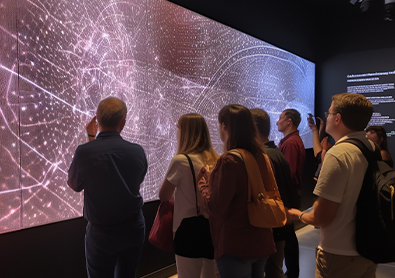Understanding & Analyzing Art
Have you ever wondered how to truly appreciate a work of art and understand its deeper meaning? That’s where art criticism comes in! It’s like a secret code that unlocks the hidden depths of a piece, allowing us to fully appreciate its magic and message. In this blog post, we’re going to take a deep dive into the world of art criticism and give you the key tips for analyzing works of art.
So, why is art criticism important?
Well, it’s like having a tour guide through a museum. Art criticism helps us understand the style, subject matter, form, and content of a piece and how they all work together to create a unique work of art. It also helps us appreciate the artist’s vision and the impact their work has on society and culture. Art criticism also helps preserve the legacy of artists and artworks for future generations.
Don’t stress, you don’t need to be a scholar or expert. With a little guidance and some basic techniques, anyone can deepen their understanding of art. Want to brush up on your art history? Take a crash course here. Let’s get started!
How to analyze and evaluate works of art?
So, what are the key elements to consider when analyzing and evaluating a work of art?
Style: This refers to the unique approach an artist takes in creating their art. It includes things like the colors, lines, shapes, and textures they use.
Subject matter: This refers to what is depicted in the artwork. It can be people, objects, landscapes, and more.
Form: This refers to the physical characteristics of the artwork, such as its size, shape, and medium.
Content: This refers to the meaning or message conveyed by the artwork. It can be explicit or implicit.
Tips for analyzing and evaluating works of art
When analyzing and evaluating a work of art, take a closer look at these key elements:
1. Observe: Take your time to observe the artwork carefully. Check out the colors, lines, shapes, and textures. Think about how they all come together to create a certain vibe.
2. Research:Learn more about the artist and the artwork. Dig into their background, what inspires them, and their style. This can give you some valuable context to understand the work better.
3. Interpret: Think about what the artwork might mean. What emotions does it make you feel? What message is it trying to convey? What idea does it express?
4. Evaluate: Make a call on the artwork based on your analysis and interpretation. Consider its strengths and weaknesses, and whether it achieves what the artist intended it to.
To sum it up…
Art criticism is a crucial part of the art world that helps us gain a deeper understanding and appreciation of art. Plus, it’s just really cool to be able to understand and discuss art on a deeper level. It’s a skill set your friends or date will certainly find impressive!
Related Resources
10 Best AI Avatar Generators to Try
Generated via Midjourney Discover the top AI avatar generators and create your unique digital persona with ease. In our rapidly…
Read MoreAI Joins Shutterstock’s Image Library
A Brave New World of Creative Imagery Credit: Shutterstock In a world that's bursting at the seams with visuals and…
Read More6 AI Photo Editing Apps You Need to Know About
Enhance Your Photos in a Snap Generated via Midjourney Photography enthusiasts have experienced their fair share of struggles when it…
Read MoreAI Gaming: A New Era of Play
Transforming Gaming as We Know It [video width="1600" height="900" mp4="https://aiartmaster.co/wp-content/uploads/2023/10/video-game-loop-1.mp4" loop="true" autoplay="true"][/video] Video Credit: Jitao Zhou/Rikkyo University Gaming…
Read MoreReal or Fake? How to Spot an AI-Generated Image
Detecting Digital Image Forgeries In today's world, AI is advancing so rapidly that distinguishing real photos from fake ones can…
Read MoreThe 10 Top AI Trends for 2024
Generative AI Trends for 2024: Shaping a New Era As we kickstart the year 2024, it's time to prepare for…
Read MoreTraditional Art Vs Digital Art: Canvas Vs Code
In the vast realm of artistic expression, two mediums have emerged as prominent contenders: traditional art and digital art. While…
Read MoreMachine Learning Core Components
Representation: Translating Data into Meaning Data representation is the linchpin of machine learning. It's the intricate process of converting raw,…
Read More

